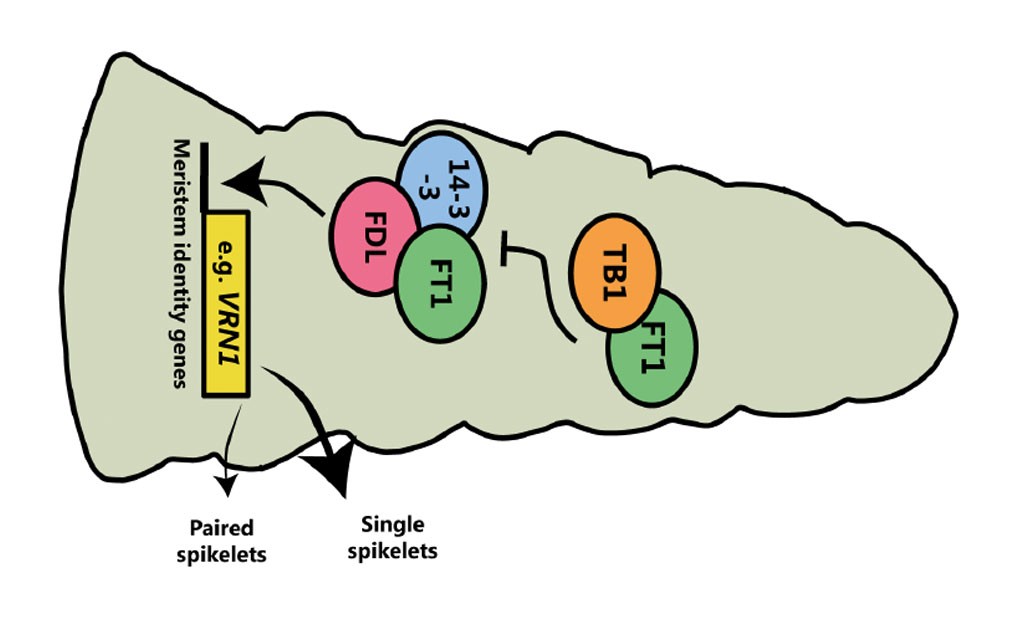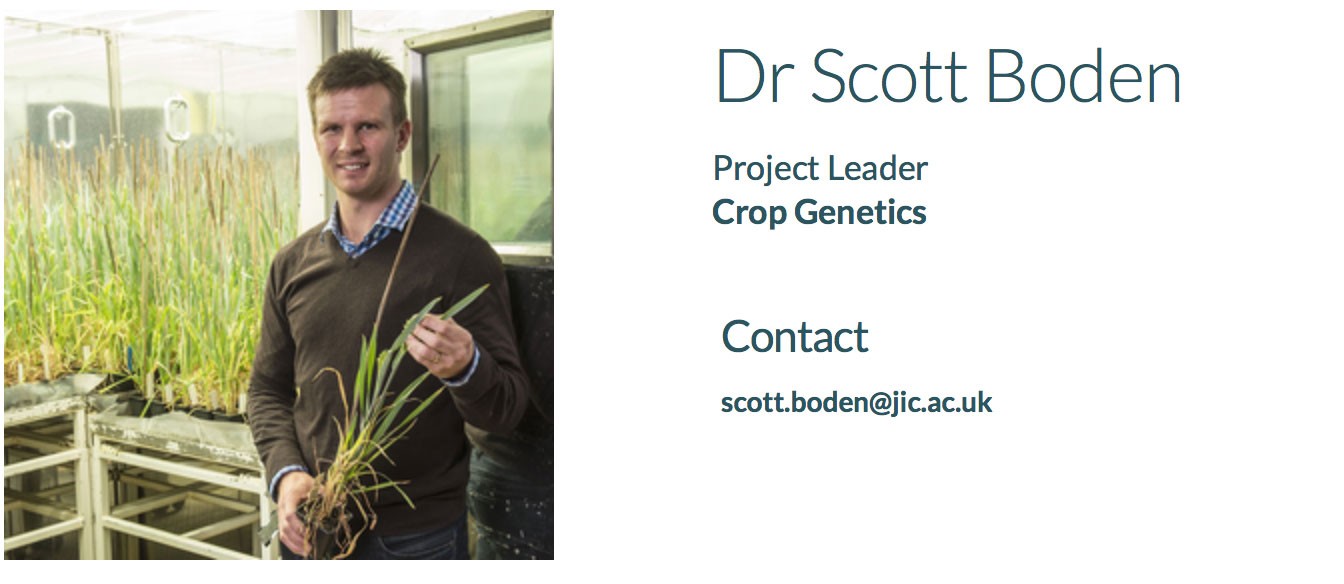博文
Plant Cell:小麦花序结构的遗传调控机制
||
TEOSINTE BRANCHED1 Regulates Inflorescence Architecture and Development in Bread Wheat (Triticum aestivum L.)
The flowers of major cereals are arranged on reproductive branches (生殖枝) known as spikelets (小穗), which group together to form an inflorescence (花序). Diversity for inflorescence architecture has been exploited during domestication to increase crop yields, and genetic variation for this trait has potential to further boost grain production. Multiple genes that regulate inflorescence architecture have been identified by studying alleles that modify gene activity or dosage; however, little is known in wheat. Here, we show TEOSINTE BRANCHED1 (TB1) regulates inflorescence architecture in bread wheat (Triticum aestivum L. 面包小麦) by investigating lines that display a form of inflorescence branching known as 'paired spikelets (成对小穗)'. We show that TB1 interacts with FLOWERING LOCUS T1, and that increased dosage of TB1 alters inflorescence architecture and growth rate in a process that includes reduced expression of meristem identity genes (分生组织特征基因), with allelic diversity for TB1 found to associate genetically with paired spikelet development in modern cultivars. We propose TB1 coordinates formation of axillary (叶腋的) spikelets during the vegetative to floral transition, and that alleles known to modify dosage or function of TB1 could help increase wheat yields.
谷类作物的开花主要是在被称作为小穗的生殖枝上,这些花聚集在一起形成花序。花序结构的多样性已经在驯化过程中被开采挖掘用以提升作物产量,该性状的遗传多样性对于提升谷粒具有极大的潜力。通过改变基因活性或是剂量研究等位基因已经鉴定了多个调控花序结构的基因,然而小麦中的研究还是不多。本文通过对具有成对小穗的小麦株系进行研究,揭示了面包小麦中的TB1基因具有调控花序结构的功能。本文表明TB1会与FLT1互作,TB1基因剂量的增加会改变花序结构和生长速率,减少分生组织特征基因的表达水平,在现代栽培种中TB1等位基因的多样性与成对小穗的发育具有遗传上的相关性。作者提出TB1基因会协调植物成花转变中叶腋小穗的形成,改变TB1基因剂量或者功能的等位基因将能够用于增加小麦的田间产量。
通讯:Scott Andrew Boden (https://www.jic.ac.uk/directory/scott-boden/)
doi: https://doi.org/10.1105/tpc.17.00961
https://blog.sciencenet.cn/blog-3158122-1100156.html
上一篇:Nature Genetics:小麦类受体激酶蛋白Stb6的克隆和分子功能研究
下一篇:New Phytologist:玉米SWEET蛋白在韧皮部装载中的作用
全部作者的其他最新博文
- • Plant Physiology:CsMADS3促进柑果中的叶绿素降解和类胡萝卜素合成(华中农业大学)
- • Molecular Plant:LBD11-ROS反馈调节作用于拟南芥的维管形成层增殖和次生生长(浦项科技大学)
- • Science Advances:根结线虫通过调控植物的CLE3-CLV1模块,促进侵染进程(日本熊本大学)
- • Nature Communications:油菜素内酯参与植物营养生长期转变的分子机制解析(浙江农林大学)
- • Current Biology:光合作用产生的蔗糖驱动侧根“生物钟”(德国弗莱堡大学)
- • PNAS:花同源异型基因在叶中被抑制、花中被激活的分子机制(南卡罗来纳大学)

